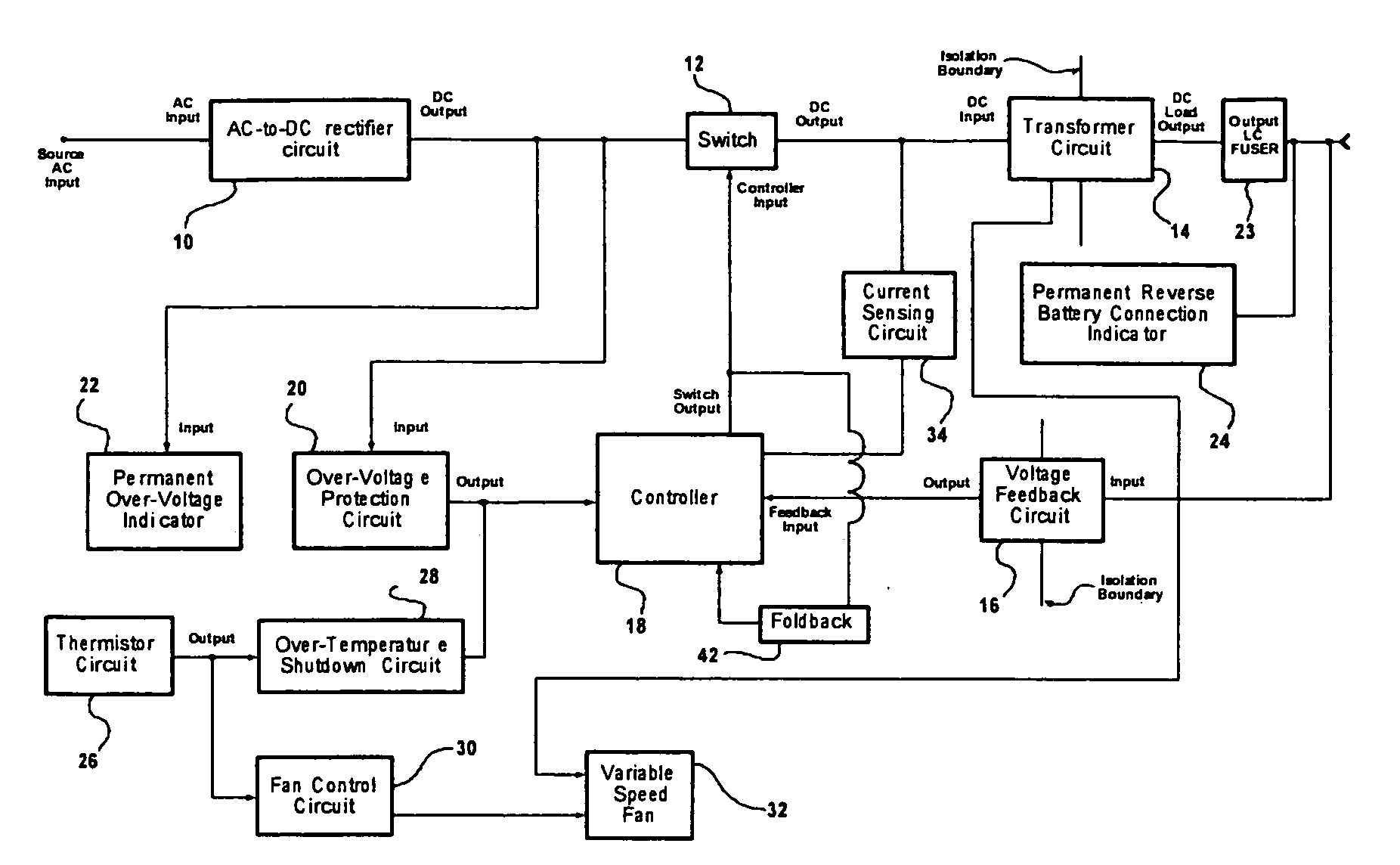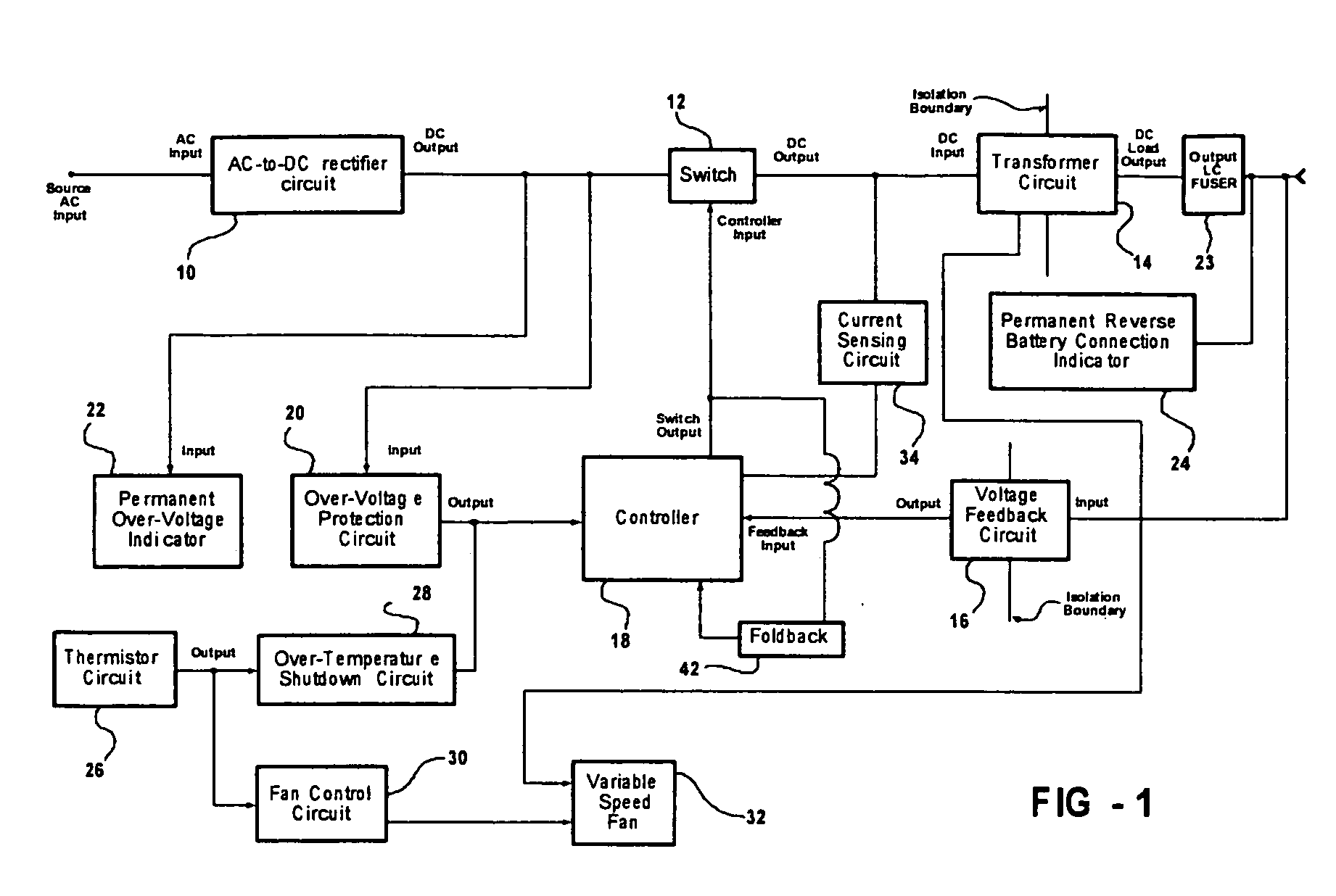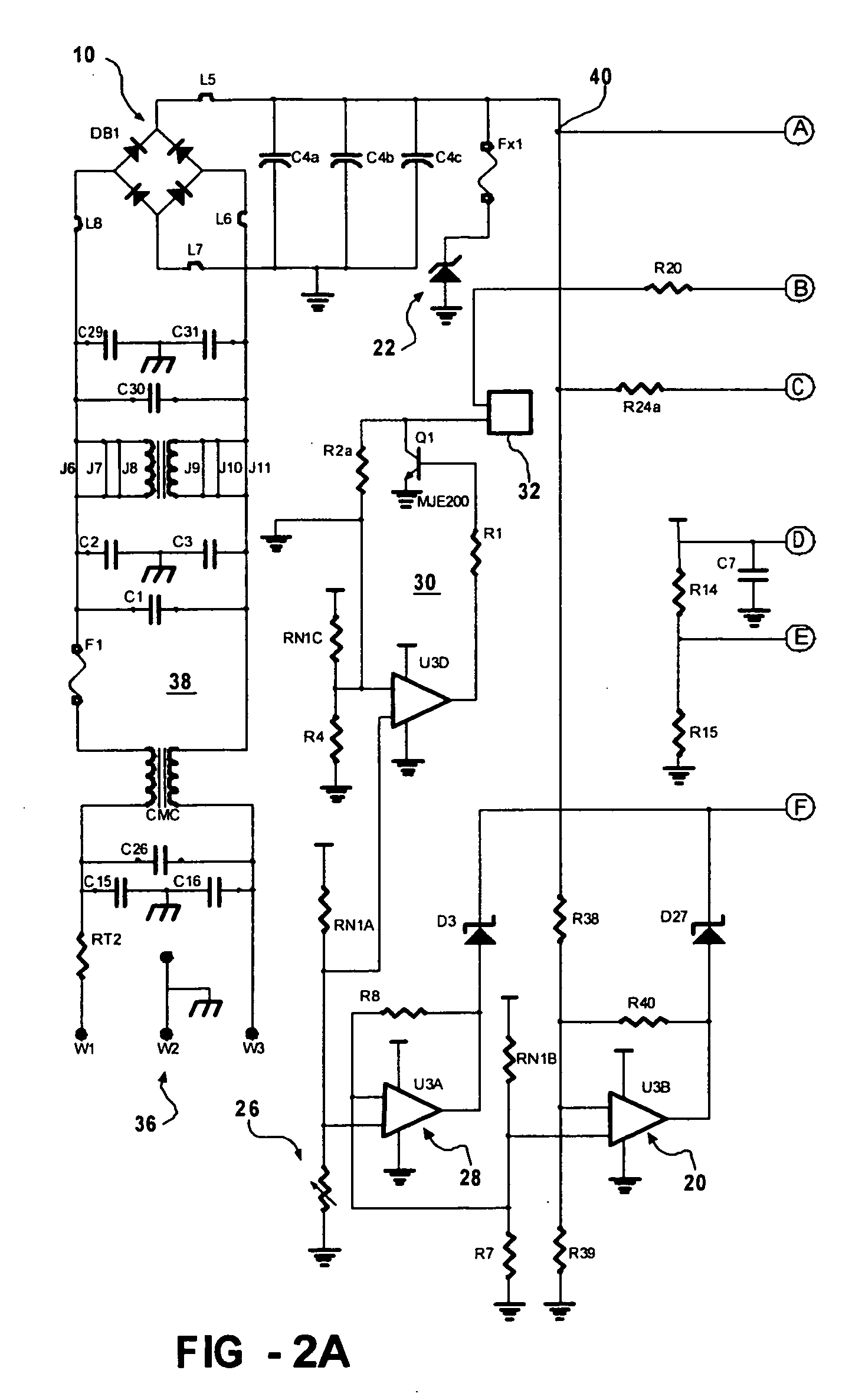Power converter
a technology of power converters and converters, applied in the direction of motor/generator/converter stoppers, dynamo-electric converter control, instruments, etc., can solve the problems of heat dissipation, noise generation, and the face of the converter, so as to avoid the unfavorable drop in the speed of the fan under heavy load conditions and achieve high breakdown voltage
- Summary
- Abstract
- Description
- Claims
- Application Information
AI Technical Summary
Benefits of technology
Problems solved by technology
Method used
Image
Examples
Embodiment Construction
[0043]FIG. 1 is a block diagram of a circuit for a switched power converter embodying the features of the present invention. The block diagram includes an AC-to-DC rectifier circuit 10, a switch circuit 12, a transformer circuit 14, a feedback circuit 16, a controller 18, an over-voltage shutdown circuit 20, a permanent over-voltage indicator 22, a permanent reverse battery indicator 24, a thermistor circuit 26, a variable speed fan 32, fan control circuit 30, an over-temperature shutdown circuit 28, a current sensing feedback circuit 34, a foldback circuit 42, and an output rectifier and LC filter circuit 44 including the inductor L2 referred to hereinafter.
[0044] The AC-to-DC rectifier circuit 10 converts a 115 v AC line voltage into an unregulated and time-varying dc signal with an average in the 170 volt range. It should be noted that the converter 46 can be plugged into a 170 vdc source, if available. In this case the rectifier 10 performs no rectification functions. The unreg...
PUM
 Login to View More
Login to View More Abstract
Description
Claims
Application Information
 Login to View More
Login to View More - R&D
- Intellectual Property
- Life Sciences
- Materials
- Tech Scout
- Unparalleled Data Quality
- Higher Quality Content
- 60% Fewer Hallucinations
Browse by: Latest US Patents, China's latest patents, Technical Efficacy Thesaurus, Application Domain, Technology Topic, Popular Technical Reports.
© 2025 PatSnap. All rights reserved.Legal|Privacy policy|Modern Slavery Act Transparency Statement|Sitemap|About US| Contact US: help@patsnap.com



